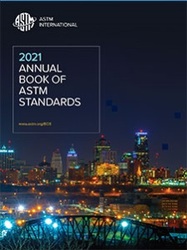Description
1.1 This test method covers the determination of the CBR (California Bearing Ratio) of pavement subgrade, subbase, and base course materials from laboratory compacted specimens. The test method is primarily intended for but not limited to, evaluating the strength of cohesive materials having maximum particle sizes less than 3/4 in. (19 mm). Note 1The agency performing this test can be evaluated in accordance with Practice D 3740.Not withstanding statements on precision and bias contained in this Standard: The precision of this test method is dependent on the competence of the personnel performing it and the suitability of the equipment and facilities used. Agencies which meet the criteria of Practice D 3740 are generally considered capable of competent and objective testing. Users of this method are cautioned that compliance with Practice D 3740 does not in itself assure reliable testing. Reliable testing depends on many factors; Practice D 3740 provides a means of evaluating some of those factors.
1.2 When materials having maximum particle sizes greater than 3/4 in. (19 mm) are to be tested, this test method provides for modifying the gradation of the material so that the material used for tests all passes the 3/ 4-in. sieve while the total gravel ( +No. 4 to 3 in.) fraction remains the same. While traditionally this method of specimen preparation has been used to avoid the error inherent in testing materials containing large particles in the CBR test apparatus, the modified material may have significantly different strength properties than the original material. However, a large experience base has developed using this test method for materials for which the gradation has been modified, and satisfactory design methods are in use based on the results of tests using this procedure.
1.3 Past practice has shown that CBR results for those materials having substantial percentages of particles retained on the No. 4 sieve are more variable than for finer materials. Consequently, more trials may be required for these materials to establish a reliable CBR.
1.4 This test method provides for the determination of the CBR of a material at optimum water content or a range of water content from a specified compaction test and a specified dry unit weight. The dry unit weight is usually given as a percentage of maximum dry unit weight determined by Test Methods D 698 or D 1557.
1.5 The agency requesting the test shall specify the water content or range of water content and the dry unit weight for which the CBR is desired.
1.6 Unless specified otherwise by the requesting agency, or unless it has been shown to have no effect on test results for the material being tested, all specimens shall be soaked prior to penetration.
1.7 For the determination of CBR of field compacted materials, see Test Method D 4429.
1.8 The values stated in inch-pound units are to be regarded as the standard. The SI equivalents shown in parentheses may be approximate.
This standard does not purport to address all of the safety problems, if any, associated with its use. It is the responsibility of the user of this standard to establish appropriate safety and health practices and determine the applicability of regulatory limitations prior to use.
Product Details
- Published:
- 11/01/2005
- Number of Pages:
- 8
- File Size:
- 1 file , 180 KB
- Redline File Size:
- 2 files , 340 KB






